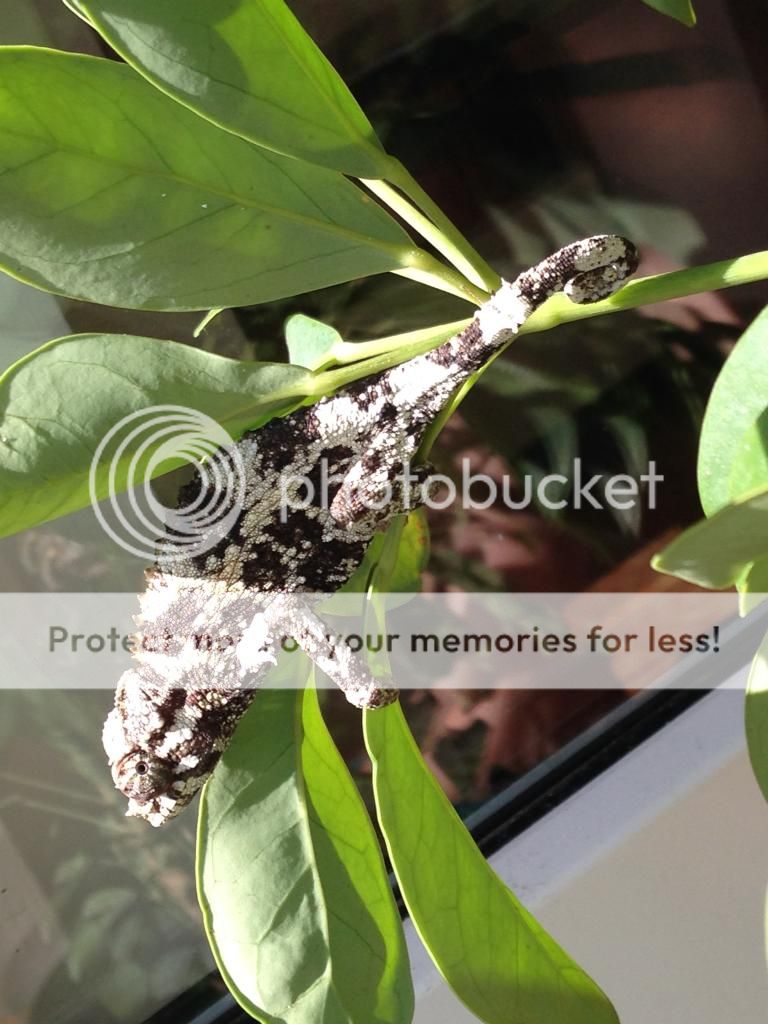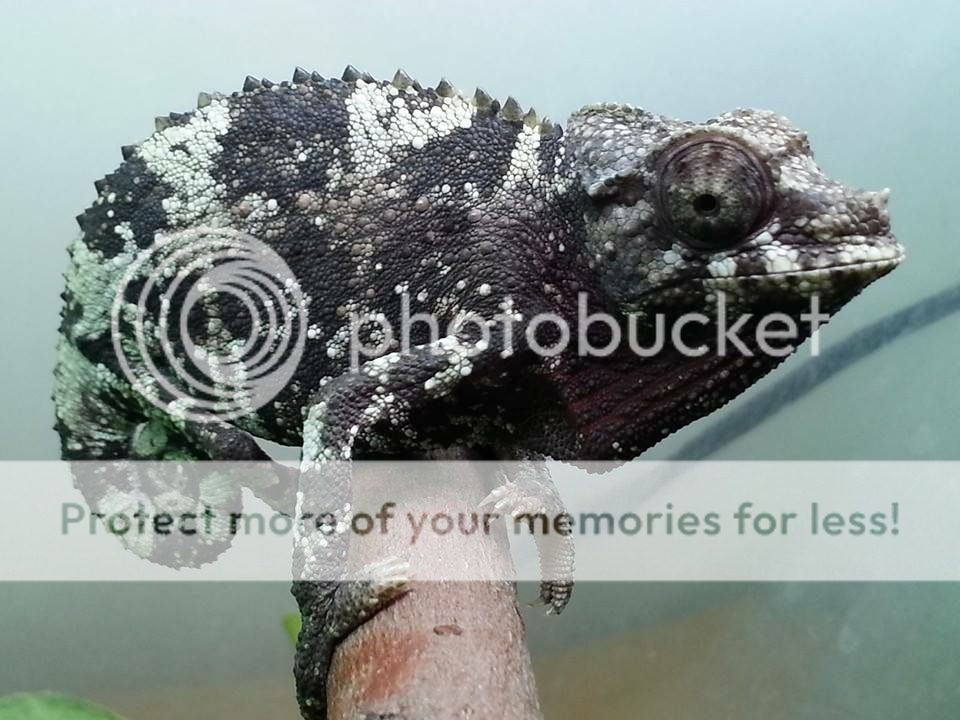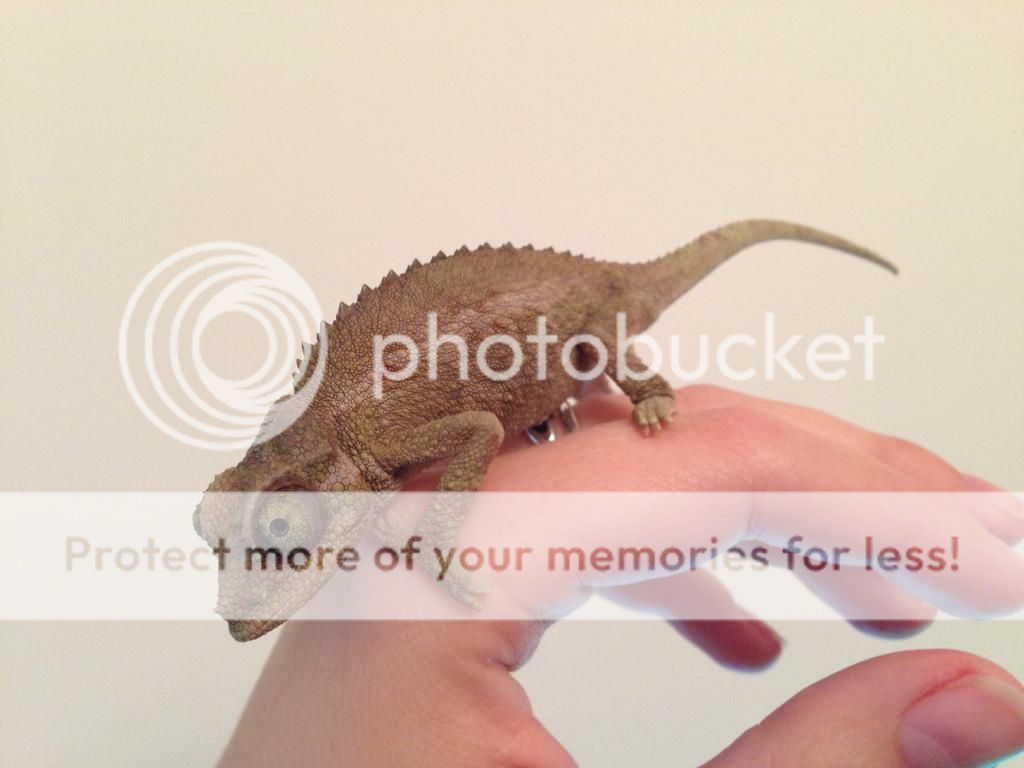Navigation
Install the app
How to install the app on iOS
Follow along with the video below to see how to install our site as a web app on your home screen.
Note: This feature may not be available in some browsers.
More options
You are using an out of date browser. It may not display this or other websites correctly.
You should upgrade or use an alternative browser.
You should upgrade or use an alternative browser.
Healthy weights for females
- Thread starter Lidee
- Start date
Lovereps
Avid Member
Hello
Are you absolutely certainyou want to breed them?
It will require a lot of your time to care for the babies and a huge amount of food, too.
Your Jackson's will probably have 1 set of babies 6 to 9 moths after she has been bred and then another set of babies 6 to 9 moths after that.
Jackson's babies also have a very unfortunate tendency to suddenly and unexpectedly drop dead before they reach about 6 months of age.
No one knows why that happens and not everyone's Jackson's babies experience this but you are better off being aware that it can happen.
My captive bred Jackson's xanth females, even from the same parents, vary in size and weight.
Perhaps your T.j. xanth is not really a xanth.
The other types of Jackson's are smaller than xanths are.
Of course if she is a xanth then she just might be a small girl or she may be a runt.
If I am not mistaken Jackson's xanths are not often found in Europe and the more usual type of Jackson's there is the Trioceros jacksonii jacksonii---which are a smaller type of Jackson's than T.J. xanths are.
Here is one older article with some pictures of the 3 types of Jackson's http://www.chameleonnews.com/10JulManchen.html
Are you absolutely certainyou want to breed them?
It will require a lot of your time to care for the babies and a huge amount of food, too.
Your Jackson's will probably have 1 set of babies 6 to 9 moths after she has been bred and then another set of babies 6 to 9 moths after that.
Jackson's babies also have a very unfortunate tendency to suddenly and unexpectedly drop dead before they reach about 6 months of age.
No one knows why that happens and not everyone's Jackson's babies experience this but you are better off being aware that it can happen.
My captive bred Jackson's xanth females, even from the same parents, vary in size and weight.
Perhaps your T.j. xanth is not really a xanth.
The other types of Jackson's are smaller than xanths are.
Of course if she is a xanth then she just might be a small girl or she may be a runt.
If I am not mistaken Jackson's xanths are not often found in Europe and the more usual type of Jackson's there is the Trioceros jacksonii jacksonii---which are a smaller type of Jackson's than T.J. xanths are.
Here is one older article with some pictures of the 3 types of Jackson's http://www.chameleonnews.com/10JulManchen.html
Lidee
New Member
thanks for the heads up..
i'm not planning on breeding them yet, coz i don't have the conditions to care for the babies, but i would like to in the future. I've heard about the sudden death issue and its definitely discouraging, but i have to say i hadn't considered the multiple clutches, i thought that only happens with the oviparous types.. that must take quite a toll on the poor girl's body.
i'll post the pictures of my chams below, coz none of the pictures in that link really match them (i just realised some are a bit blurry, sorry bout that)… maybe the meromontanus is the closest but then the horns are too small… or maybe they're still too young, their colouring is very alike to the juvenile T.j.jacksonii.
This is my first girl:



this is the second:



And this is the boy:


i'm not planning on breeding them yet, coz i don't have the conditions to care for the babies, but i would like to in the future. I've heard about the sudden death issue and its definitely discouraging, but i have to say i hadn't considered the multiple clutches, i thought that only happens with the oviparous types.. that must take quite a toll on the poor girl's body.
i'll post the pictures of my chams below, coz none of the pictures in that link really match them (i just realised some are a bit blurry, sorry bout that)… maybe the meromontanus is the closest but then the horns are too small… or maybe they're still too young, their colouring is very alike to the juvenile T.j.jacksonii.
This is my first girl:



this is the second:



And this is the boy:


MeruJack
Avid Member
How are your Jackson's doing? I noticed that no one replied after you shared your pics. I have two of the three types of Jackson's; the xanth gravid female (no horns or nubs) and I have a pair of the dwarf Jackson's and five of their babies. The dwarf mom has one cute, curved horn on the tip of her nose. Since xanth females have no horns and dwarf females have one and both of your females appear to have the beginnings (nubs) of three horns (and also because the male has the definite coloring & body build of the species) I am positive that you have a pair of the rarer species of Jacksonii Jacksonii. How are they doing?
Lidee
New Member
I have to say i gave up on ever getting a reply to this thread, so thank you very much for your feedback! 
Unfortunately one of my girls passed away. Both girls had a spell of watery stool and were doing poorly in general, but the vet couldn't find any sign of parasites or infection in either one. The one that kept eating pulled thru and has been doing well since.
Both girls had a spell of watery stool and were doing poorly in general, but the vet couldn't find any sign of parasites or infection in either one. The one that kept eating pulled thru and has been doing well since. 
My male is being his usual picky eater self, he only wants to eat small zoophobas worms, occasionally a small locust, so i worry bout that, but he's been like that since i have him. :/
I heard from the breeder that i bought him from that, given a large enough area, you can house jacksonii male and females together without issue. He even showed me his setup, and it wasn't that large - around 150x100x50cm, but i'm quite reluctant to do so as my female appeared rather stressed in his presence, with high contrast colour change and puffing up…
Do you have any experience with that maybe?
Unfortunately one of my girls passed away.
My male is being his usual picky eater self, he only wants to eat small zoophobas worms, occasionally a small locust, so i worry bout that, but he's been like that since i have him. :/
I heard from the breeder that i bought him from that, given a large enough area, you can house jacksonii male and females together without issue. He even showed me his setup, and it wasn't that large - around 150x100x50cm, but i'm quite reluctant to do so as my female appeared rather stressed in his presence, with high contrast colour change and puffing up…
Do you have any experience with that maybe?
Chris Anderson
Dr. House of Chameleons
Hi Lidee,
Would definitely like to see updated photos of the female that is left, but based on the previous photos, the male is most definitely Trioceros jacksonii jacksonii and the female looks like a young Trioceros jacksonii xantholophus. An updated photo of the female would help verify that, however.
Best,
Chris
Would definitely like to see updated photos of the female that is left, but based on the previous photos, the male is most definitely Trioceros jacksonii jacksonii and the female looks like a young Trioceros jacksonii xantholophus. An updated photo of the female would help verify that, however.
Best,
Chris
Chris Anderson
Dr. House of Chameleons
Yep, she is T. j. xantholophus.
Chris
Chris
Similar threads
- Replies
- 9
- Views
- 561
- Replies
- 18
- Views
- 654





